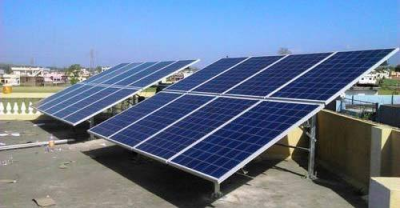Commentary from Mr. Sanjay Kumar Mittal – Senior Director, Eninrac
The transmission infrastructure of India has undergone a significant transformation over the last three decades. A pivotal development in this journey was the establishment of Power Grid Corporation of India Ltd., designated as the Central Transmission Utility (CTU) in 1998. This structural evolution continued with the incorporation of Central Transmission Utility of India Ltd. (CTUIL) in 2020, which has been operating independently since 2021, overseeing all inter-state transmission networks across the country.
CTUIL’s core mandate includes the planning, execution, and monitoring of Inter-State Transmission System (ISTS) projects, ensuring seamless power evacuation from generation hubs to load centers. This centralization was necessitated to maintain grid discipline and avoid systemic instabilities -events that have disrupted operations in the past, most notably the Northern Grid collapse in 2007 - 08.
The demand for power in India is consistently increasing at an annual rate of 5–6%. For context, peak demand in the summer of 2025 is projected to reach 270–275 GW, a sharp increase from 230 GW in 2024 and more than double the 135 GW recorded a decade earlier. As such, CTUIL’s responsibilities have become increasingly critical. The agency is tasked with identifying new ISTS corridors—both for conventional and renewable energy sources—and with augmenting and reconfiguring existing infrastructure to meet evolving load patterns and generation trends.
CTUIL functions in close coordination with the Central Electricity Authority (CEA), Power Grid Corporation of India, Central Electricity Regulatory Commission (CERC), state transmission utilities (STUs), National Load Dispatch Centre (NLDC), and state load dispatch centers (SLDCs). All planning initiatives are routed through consultative mechanisms involving the National Committee on Transmission, Regional Power Committees, and the Ministry of Power.
Implementation of these projects is carried out via two distinct models:
- Regulated Tariff Mechanism (RTM) for Power Grid Corporation.
- Tariff-Based Competitive Bidding (TBCB) for private sector participants.
CTUIL also oversees cross-border transmission infrastructure. Typically, a five-year rolling transmission plan is prepared, though given the Government of India’s ambitious renewable energy targets for 2030, 2035, and 2047, a more dynamic approach is required. Renewable capacity is expected to double within the next 5–6 years, necessitating massive infrastructure upgrades. The upcoming five-year plan alone is estimated to require investments nearing ₹10 lakh crore, as envisaged in the National Electricity Policy.
Despite clear frameworks, transmission projects across both public and private domains continue to face challenges—primarily due to land acquisition hurdles, public resistance, and material availability delays.
CTUIL releases its finalized transmission planning reports every March and provides interim updates in September each year to allow for mid-course corrections, ensuring that any changes in planning or ground realities are swiftly addressed. Additionally, CTUIL serves as the nodal body for communication systems within the ISTS, issuing a biennial communication plan to ensure the robustness of data and voice channels, including teleprotection systems for national, regional, and cross-border grids.
In recent developments, the CERC has proposed amendments to the General Network Access (GNA) regulations, acknowledging the evolving complexities of India’s transmission systems. A public consultation was held on April 9, 2025. One significant proposal includes bifurcating transmission line capacity into solar and non-solar hours, a move poised to enhance the notional utilization of transmission corridors. If implemented, this change would significantly optimize asset utilization across the grid.
For detailed updates and forward-looking insights into India’s power transmission sector, stay connected with Eninrac and Omnicore. The next commentary will delve into the current status and future prospects of India’s transmission line capacity.




